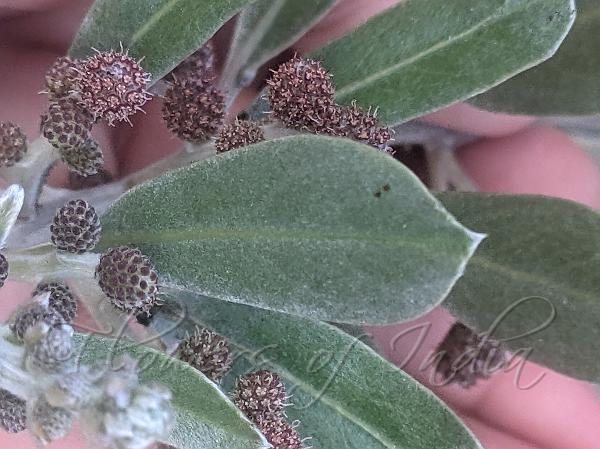|
| Buttonwood Mangrove |
|

|

| File size | 667575 |
| Original date | 9/27/22 7:08 AM |
| Resolution | 4000 x 3000 |
| Flash | Flash did not fire, auto |
| Focal length | 4.74mm |
| Exposure time | 1/190s |
| Aperture | 1.79 |
| Focus Distance | 0.19m |
| Metering Mode | Center weighted average |
| Camera make | Xiaomi |
| Camera model | Redmi Note 8 (ginkgo) |
| Sensor type | OneChipColorArea |
|
|
|
|
Photo: |
Botanical name: Conocarpus erectus Family: Combretaceae (Rangoon creeper family)
Synonyms: Terminalia erecta, Conocarpus erectus var. sericeus
Synonyms: Terminalia erecta, Conocarpus erectus var. sericeus
Buttonwood Mangrove is usually a dense
multiple-trunked shrub, 1-4 m tall, but can grow into a tree up to 20 m
or more tall, with a trunk up to 1 m in diameter. The bark is thick and
has broad plates of thin scales which are gray to brown. The twigs are
brittle, and angled or narrowly winged in cross-section. Leaves are
alternately arranged, simple and oblong, 2-7 cm long and 1-3 cm broad,
with a tapering tip and an entire margin. They are dark green and shiny
on top, and paler with fine silky hairs underneath, and have two salt
glands at the base of each leaf. The variety sericeus has silvery
leaves. The flowers are button-like, which inspired the common names,
5-8 mm in diameter, with no petals; they are produced in stalked
panicles of 35-56 flowers. The fruit is a cluster of red to brown,
small scaly, two-winged cone-like seeds, 5-15 mm long. The seed heads
burst when ripe, and the seeds are dispersed by water. Buttonwood
Mangrove is native to S. Florida to Peru and Brazil, W. Tropical Africa
to N. Angola, cultivated elsewhere.
| Identification credit: Rakesh Singh | Photographed in SavarKundla, Gujarat. |
• Is this flower misidentified? If yes,